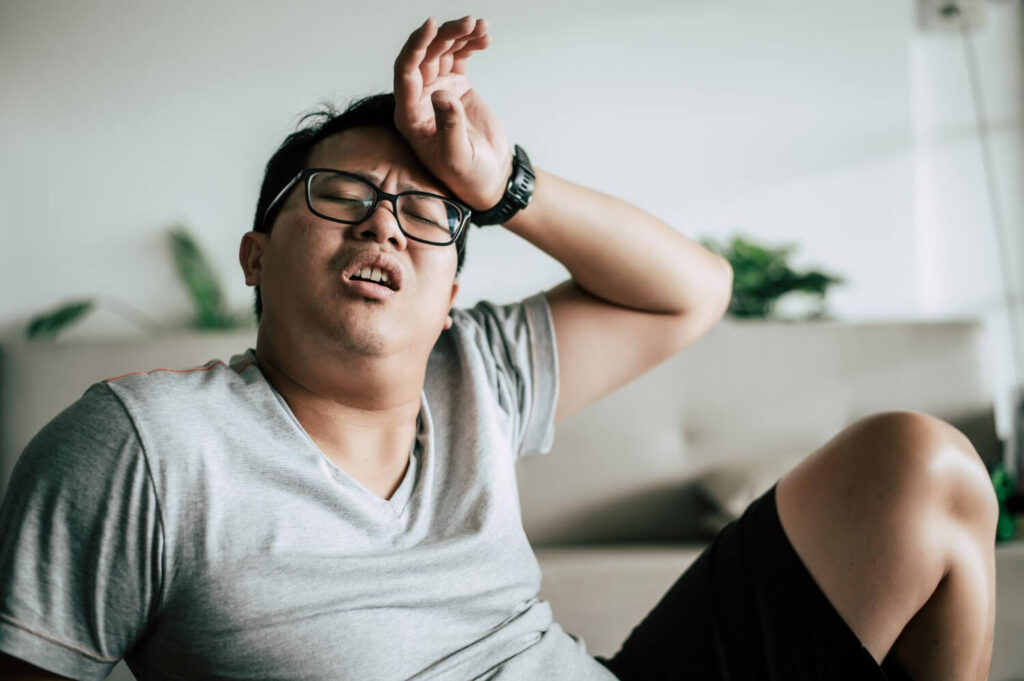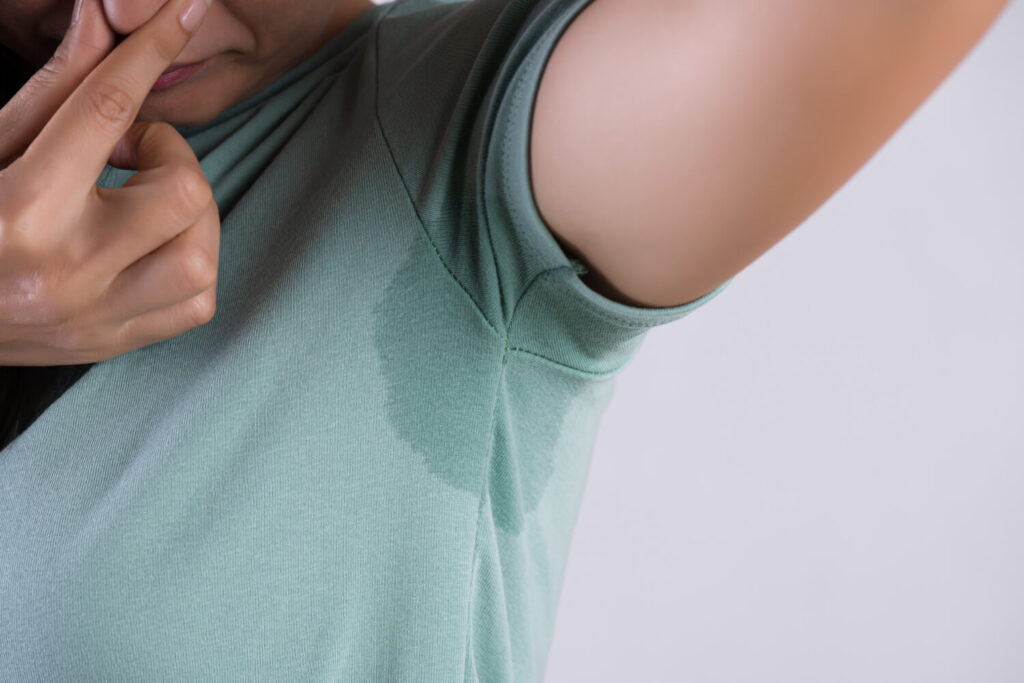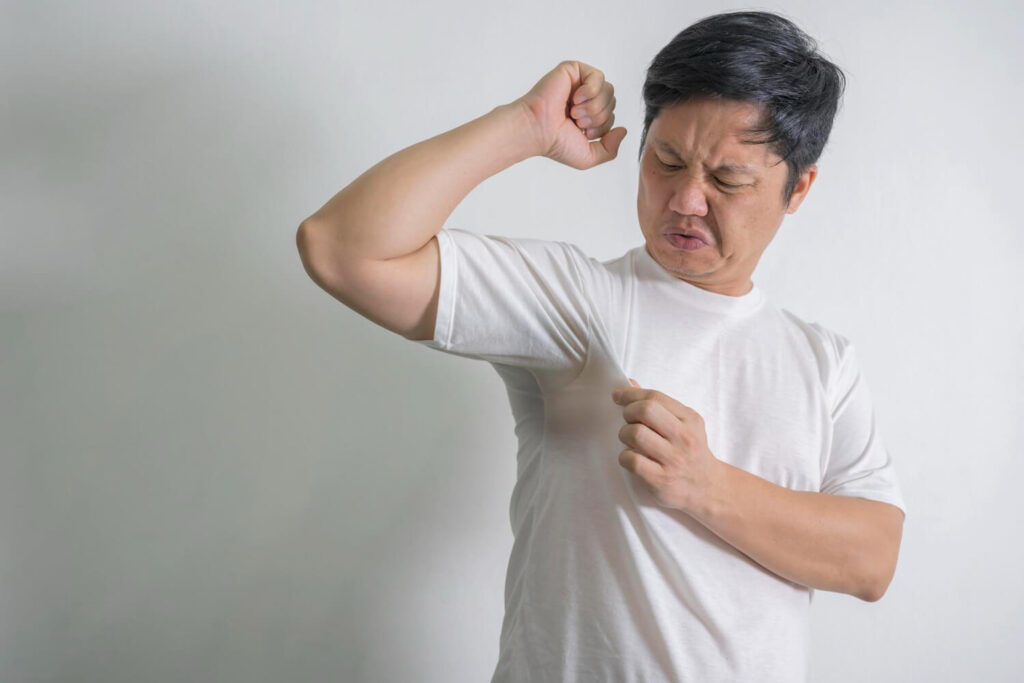Hyperhidrosis, commonly referred to as excessive sweating, is more than just an inconvenience; it’s a medical condition that can profoundly affect the lives of those who suffer from it. While sweating is a natural and essential function of the human body, aiding in temperature regulation, hyperhidrosis takes this natural process to an extreme. It can manifest in drenching perspiration, even in cool environments or without physical exertion, leading to both physical and emotional discomfort.
The issues commonly associated with hyperhidrosis extend far beyond the physical realm. Excessive sweating can lead to skin problems, such as bacterial or fungal overgrowth, and increase the risk of infections. Furthermore, it can have serious implications on an individual’s quality of life. From staining clothing to hindering social interactions, hyperhidrosis can lead to embarrassment, anxiety, and social withdrawal. The condition can affect daily activities, relationships, career choices, and overall mental well-being.
The underlying causes of hyperhidrosis are varied and can be classified into primary and secondary forms. Primary hyperhidrosis, often genetic, occurs without a known medical cause, while secondary hyperhidrosis may be a result of underlying health conditions or medications. Regardless of the cause, the effects are tangible and often devastating for those who live with this condition.
In this guide, we will explore the multifaceted aspects of hyperhidrosis, including its causes, symptoms, diagnosis, treatment options, and impacts on daily life. Insights from three renowned doctors will be shared to provide expert opinions and medical perspectives on managing this complex condition. Whether you are personally affected by hyperhidrosis or seeking to understand it on behalf of someone else, this comprehensive overview aims to provide the information and support needed to navigate the challenges of living with excessive sweating.

What is Hyperhidrosis?
Hyperhidrosis is a medical condition characterized by excessive sweating beyond what’s needed for normal body temperature regulation. It has two primary classifications:
Primary Hyperhidrosis: Often genetic and without a known medical cause, this type usually occurs symmetrically and in localized areas like the palms, feet, and armpits.
Secondary Hyperhidrosis: This form is caused by underlying medical conditions or medication side effects, resulting in a more generalized pattern of excessive sweating.
We all sweat. Sweating is a normal physiologic process that allows our body to regulate its temperature. If we sweat excessively, it’s possible that can be a condition called hyperhidrosis. There are many possible causes of hyperhidrosis. Most of the time it becomes a problem once it takes a toll on a person’s social and/or emotional well-being.
Dr. Katrina Habaluyas Luz
Causes of Excessive Sweating
The causes of Hyperhidrosis are multifaceted and may include the following.
Primary Causes:
- Genetic predisposition: There’s evidence that primary hyperhidrosis runs in families, suggesting a genetic component.
- Overactive sweat glands: People with primary hyperhidrosis have sweat glands that are more sensitive and produce more sweat than needed for temperature regulation.
- Sympathetic nervous system dysfunction: The sympathetic nervous system controls involuntary functions like sweating. Dysfunction in this system can lead to excessive sweating.
- Onset in childhood or adolescence: Primary hyperhidrosis often starts in these life stages, affecting areas like palms, soles, armpits, and face.
- Emotional triggers: Emotions like stress and anxiety can exacerbate sweating in individuals with primary hyperhidrosis.
Secondary Causes:
- Underlying medical conditions such as diabetes or hyperthyroidism.
- Certain medications like antidepressants.
- Understanding the root cause is crucial for proper diagnosis and treatment.
Primary focal or essential Hyperhidrosis is idiopathic with no known medical cause. It typically begins in childhood or puberty and continuous to persists into adulthood. It presents symmetrically and may affect the axillae, palms, soles, centrofacial area as well as the groin or in combination with other body parts.
Dr. Michelle Dy Sim, MD, DPDS

Impact on Daily Life
Excessive sweating is a condition that most people may overlook as a mere inconvenience or simply attribute to hot weather or physical exertion. However, when it evolves into hyperhidrosis, it transforms into more than just a physical issue; it becomes a pervasive factor affecting mental well-being and daily life.
Social Interactions:
Many individuals with hyperhidrosis find social situations to be highly challenging. The fear of noticeable sweat stains or a clammy handshake can create a barrier to forming personal connections, leading to feelings of isolation and loneliness. Avoidance of social activities that might trigger sweating can further contribute to a sense of alienation.
Work Productivity:
The workplace is another area where hyperhidrosis can have a profound effect. From giving a presentation to daily interactions with colleagues, excessive sweating can lead to self-consciousness and reduced confidence. This can affect performance, hinder career progression, and even influence job choices, with some individuals opting for roles that minimize social interaction or physical exertion.
Personal Self-Confidence:
Self-image and self-esteem can be significantly impacted by hyperhidrosis. Continuous worry about appearance and body odor may lead to withdrawal from favorite activities, like sports or dance, affecting overall quality of life.
Emotional Toll:
As emphasized by experts like Dr. Luz, the emotional toll of hyperhidrosis can be severe, leading to anxiety, depression, and withdrawal from daily life. Constant vigilance about clothing choices, appearance, and how others may perceive you can be exhausting and distressing.
Physical Complications:
Though it may seem normal, excessive sweating can also lead to skin conditions such as bacterial or fungal overgrowth. Continual dampness can cause skin maceration and infections, adding another layer of complexity to managing the condition.
The Importance of Professional Help:
The journey to managing hyperhidrosis begins with acknowledging the condition and seeking professional help. Consulting with a specialist ensures that treatment is tailored to the individual’s specific condition, addressing not just the physical symptoms but also the emotional aspects.

Doctor’s Insights on Hyperhidrosis
A. Insights from Dr. Katrina Habaluyas Luz
Understanding Hyperhidrosis:
- Sweating is normal, but excessive sweating can be disruptive.
- Distinguishes primary hyperhidrosis from secondary.
- Signs and Symptoms:
- Sweating excessively without physical exertion or high temperature.
- Emotional discomfort and avoidance of social activities.
Treatment Options:
- Topical Agents: Such as aluminum chloride.
- Oral Medications: Anticholinergics, beta-blockers.
- Injections: Botulinum toxin.
- Microwave Thermolysis: Targets underarm sweat glands.
- Surgery: Sympathectomy, which carries risks and potential complications.
Home Management Tips:
- Wearing breathable clothing.
- Choosing moisture-wicking footwear.
- Regularly applying prescribed antiperspirants.
- Consultation with a board-certified dermatologist.
Emotional Support:
- Recognizes the significant psychological impact.
- Encourages support groups and mental health counseling.
Book with Dr. Katrina Habaluyas Luz
B. Insights from Dr. Michelle Dy Sim, MD, DPDS
Defining Hyperhidrosis:
- Characterizes hyperhidrosis as a disorder of the sweat glands.
- Explains the complexities of primary and secondary forms.
Diagnosis Tools:
- Utilizes the Minor starch-iodine test to identify affected areas.
- Comprehensive examination including health history.
Treatment Approaches:
- Topical Treatment: Prescription antiperspirants.
- Specialized Treatments: Botulinum toxin injections, or electromagnetic energy thermolysis.
- Secondary Hyperhidrosis: Requires identifying and treating the underlying condition.
- Consultation: Advises seeing a board-certified dermatologist or other specialists depending on the underlying causes.
C. Insights from Dr. Maria Rosa Noliza F. Encarnacion, MD FPDS
Understanding Hyperhidrosis:
- Defines abnormal sweating as an imbalance in the body’s thermoregulation.
- Differentiates primary and secondary causes.
Symptoms and Diagnosis:
- Explores localized versus generalized symptoms.
- Recommends testing for secondary infections.
Treatment Plans:
- First Line: Education, specially designed garments, topical medications.
- Specialized Treatments: Iontophoresis, botulinum toxin injections.
- Surgical and Physical Techniques: Laser therapy, surgical interventions.
- Supportive Therapies: Counseling, psychotherapy.
Community Support:
- Encourages joining local or international support groups.
- Acknowledges lifelong impacts on quality of life and social interactions.
Book with Dr. Maria Rosa Noliza F. Encarnacion
Diagnosis and Treatment

The process of diagnosing and treating hyperhidrosis is multifaceted and requires careful examination and tailored treatments:
- Diagnosis: Involves a clinical history review, physical examination, and specific tests such as sweat tests.
- Treatment Options: Various medical interventions are available, ranging from over-the-counter products to surgical procedures, depending on the severity and underlying cause.
The treatments for primary Hyperhidrosis include simple conservative measures such as patient education, use of appropriate garments such as socks, absorbent underlayers, etc. Management options include topical aluminum chlorohydrate, iontophoresis, botulinum toxin injections, oral anticholinergic drugs. Surgical and physical techniques are reserved for third line therapies.
Dr. Maria Rosa Noliza F. Encarnacion, MD FPDS
Tips for Managing Excessive Sweating at Home
Managing hyperhidrosis at home is essential for maintaining comfort and well-being. Key tips from Dr. Luz include:
- Selecting appropriate clothing made of breathable fabrics.
- Paying attention to footwear, including open-toed shoes for ventilation.
- Regular consultation with a board-certified dermatologist for personalized care and support.
The Importance of Consulting a Specialist

When it comes to managing and treating hyperhidrosis, consulting a specialist is not just a beneficial step; it’s essential. While there may be numerous over-the-counter products and anecdotal remedies available, the complex nature of hyperhidrosis requires professional medical attention to accurately diagnose and effectively treat the condition. Here’s why seeking help from a specialist, such as a board-certified dermatologist, is paramount:
Accurate Diagnosis:
Hyperhidrosis can be either primary or secondary, with each type having distinct causes and requiring specific treatment approaches. A specialist has the knowledge and tools to accurately identify the underlying factors of excessive sweating, distinguishing between primary hyperhidrosis and secondary forms caused by underlying health conditions or medications.
Tailored Treatment Plans:
A specialist in hyperhidrosis is equipped to create a customized treatment plan based on the individual’s specific needs and medical history. This can range from prescription antiperspirants and oral medications to advanced therapies like botulinum toxin injections or surgery. These tailored treatments are far more likely to be effective than one-size-fits-all solutions available over the counter.

Monitoring and Ongoing Support:
Hyperhidrosis treatment may require ongoing monitoring and adjustments to ensure optimal results. Regular consultations with a specialist ensure that the treatment is working as intended and can be adjusted as needed, something that alternative remedies can’t provide.
Emotional Support and Guidance:
Living with hyperhidrosis can be emotionally taxing. A specialist understands the mental and emotional toll the condition can take and can provide support, counseling, and guidance in addition to medical treatment.
Avoiding Potential Risks: Some alternative treatments and home remedies might seem appealing but can lead to complications, ineffective results, or even worsening of the condition. Consulting a specialist mitigates these risks, ensuring that the treatment is safe, appropriate, and aligned with medical best practices.

Comprehensive Care:
Specialists often work within a network of healthcare providers, enabling coordinated care if hyperhidrosis is linked to other underlying medical conditions. This comprehensive approach ensures that all aspects of a patient’s health are considered and cared for.
Educating and Empowering Patients:
A specialist not only treats the condition but educates patients about their condition, empowering them to make informed decisions and take active roles in their treatment.
In conclusion, while hyperhidrosis might be a complex and often distressing condition, it is manageable with the right approach. Consulting a specialist is not just the best choice; it’s the responsible one. It is the pathway to understanding, managing, and effectively treating excessive sweating, prioritizing not just physical well-being but mental and emotional health as well.
If you or someone you know is struggling with hyperhidrosis, reach out to a medical professional. Their expertise will be the guiding light in your journey towards a life free from the constraints of excessive sweating.
